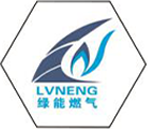
Dec . 04, 2024 16:44
Back to list
Pressure Regulation Techniques for Efficient System Performance and Safety
Understanding Pressure Reducers A Key Component in Fluid Control Systems
Pressure reducers, often referred to as pressure regulators, are essential mechanical devices used in various industries to control and reduce the pressure of gases or liquids. These devices ensure that the pressure delivered to the system is consistent and within the desired limits, thereby preventing damage to equipment, enhancing safety, and optimizing operational efficiency. In this article, we will explore the mechanics, applications, and advantages of pressure reducers.
What is a Pressure Reducer?
At its core, a pressure reducer is designed to decrease the pressure in a fluid system. It accepts high-pressure fluid from a source and outputs it at a lower, regulated pressure. The primary function of a pressure reducer is to maintain a stable downstream pressure despite variations in upstream pressure or flow demands.
The mechanism typically consists of a sensing element, a control element (often a diaphragm), and an adjustable spring. The sensing element monitors the downstream pressure and, when it exceeds the set point, moves the control element to partially close the inlet and reduce the flow. Conversely, if the downstream pressure drops, the spring expands, allowing more flow to restore the pressure.
Types of Pressure Reducers
There are several types of pressure reducers, each suited for different applications and operating conditions
1. Single-Stage Pressure Reducers These are designed for applications where the pressure change is minimal. They provide a direct connection between the high-pressure source and the outlet.
2. Two-Stage Pressure Reducers These are used when a more precise pressure regulation is needed, as they have two stages of pressure reduction. They are ideal for systems requiring stable pressures regardless of changes in flow rates.
3. Adjustable Pressure Reducers These allow users to set the desired downstream pressure based on specific needs. They are particularly useful in dynamic systems.
.
Applications of Pressure Reducers
مخفض الضغط

Pressure reducers are utilized across various sectors, including
- Industrial Manufacturing Many manufacturing processes require specific pressure levels for optimal operation. A pressure reducer ensures that machinery operates efficiently, minimizing wear and tear.
- Gas Distribution In gas infrastructure, pressure reducers are crucial for maintaining safe and stable pressure levels throughout pipelines, thus preventing accidents and ensuring safety for end-users.
- Fire Suppression Systems These systems rely on consistent water pressure. Pressure reducers help maintain the necessary pressure for effective fire control, ensuring systems activate as needed.
- Medical Equipment Devices such as ventilators require precise pressure control to deliver the correct airflow to patients. Pressure reducers make these measurements accurate and reliable.
Advantages of Using Pressure Reducers
1. Protection of Equipment By controlling the inlet pressure, pressure reducers protect downstream equipment from damage due to excessive pressure.
2. Enhanced Safety Pressure regulation helps prevent dangerous situations, such as explosions or leaks, particularly in volatile environments.
3. Operational Efficiency Stable pressure improves the performance and efficiency of machinery, often leading to lower operational costs and better productivity.
4. Flexibility Many pressure reducers are adjustable, allowing for customization based on specific operational needs, which can be particularly beneficial in complex systems.
Conclusion
In summary, pressure reducers are vital components in managing fluid systems across various industries. By ensuring regulated, stable pressure, they safeguard equipment, enhance safety, and promote efficient operations. With advances in technology, pressure reducers continue to evolve, providing even greater reliability and functionality in increasingly complex systems. Understanding their mechanics and applications is crucial for anyone involved in industries that rely on fluid control systems. As industries grow and evolve, the importance of these devices will only continue to increase, reinforcing their role in maintaining safety and efficiency in fluid management.
Latest news
-
Safety Valve Spring-Loaded Design Overpressure ProtectionNewsJul.25,2025
-
Precision Voltage Regulator AC5 Accuracy Grade PerformanceNewsJul.25,2025
-
Natural Gas Pressure Regulating Skid Industrial Pipeline ApplicationsNewsJul.25,2025
-
Natural Gas Filter Stainless Steel Mesh Element DesignNewsJul.25,2025
-
Gas Pressure Regulator Valve Direct-Acting Spring-Loaded DesignNewsJul.25,2025
-
Decompression Equipment Multi-Stage Heat Exchange System DesignNewsJul.25,2025

